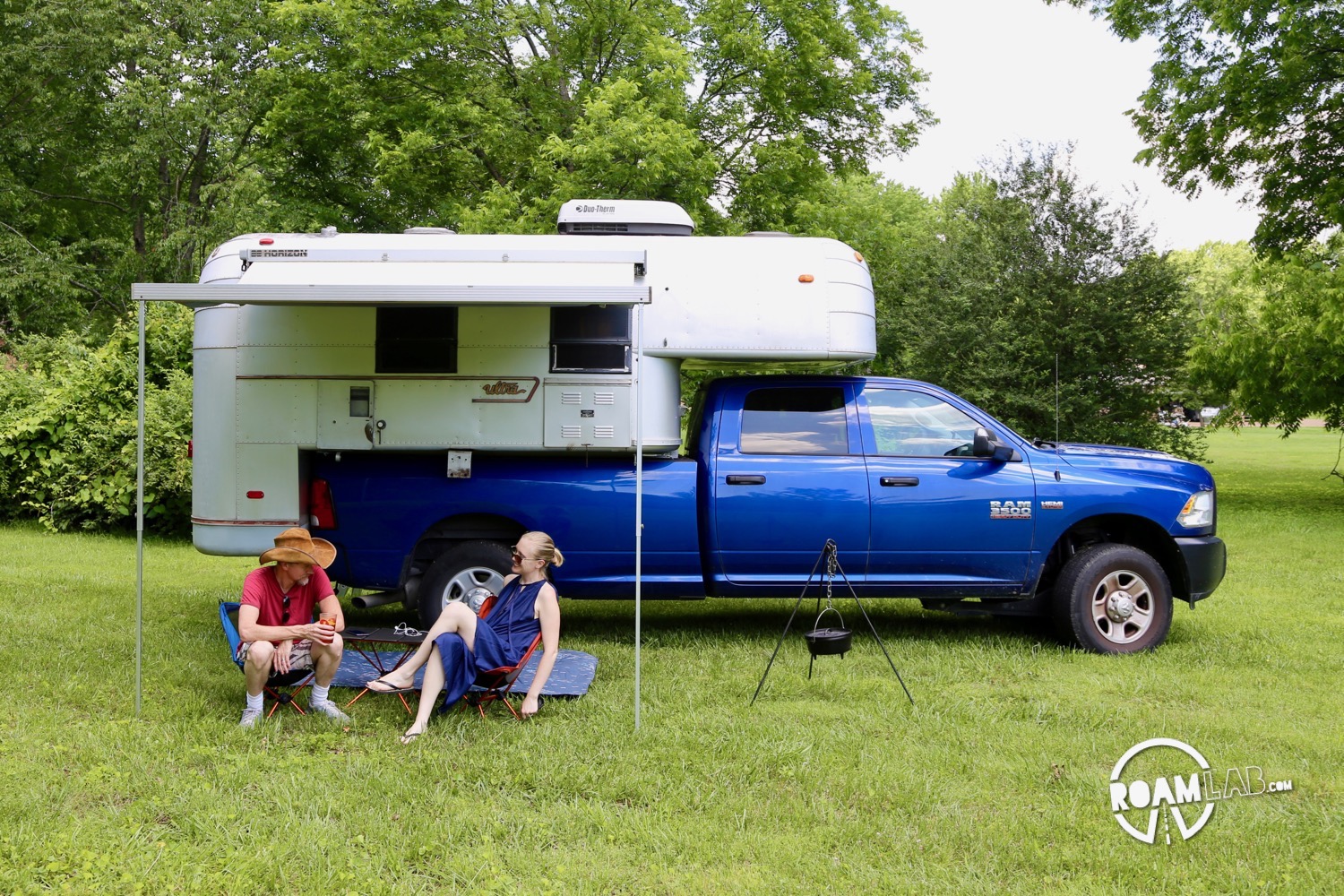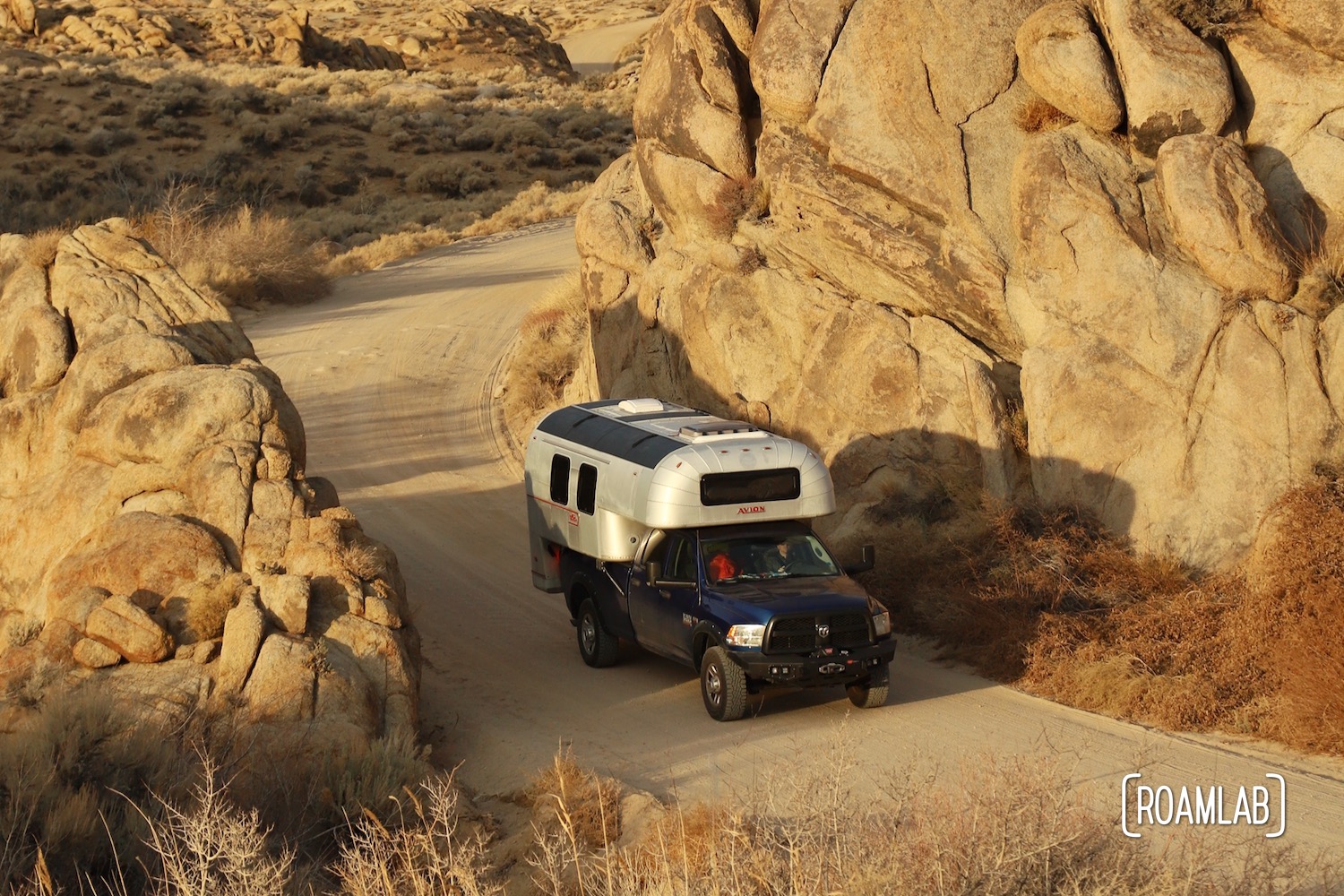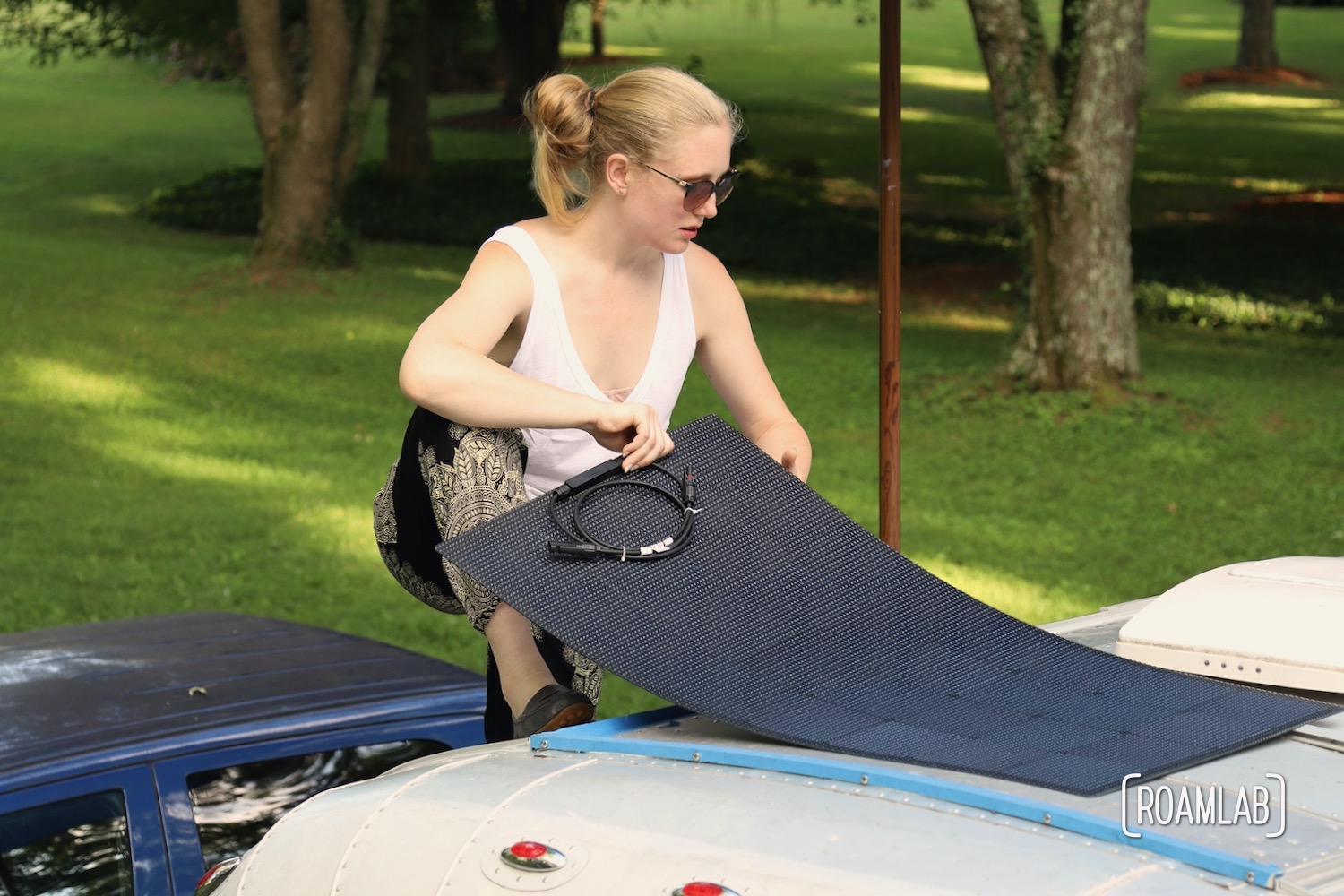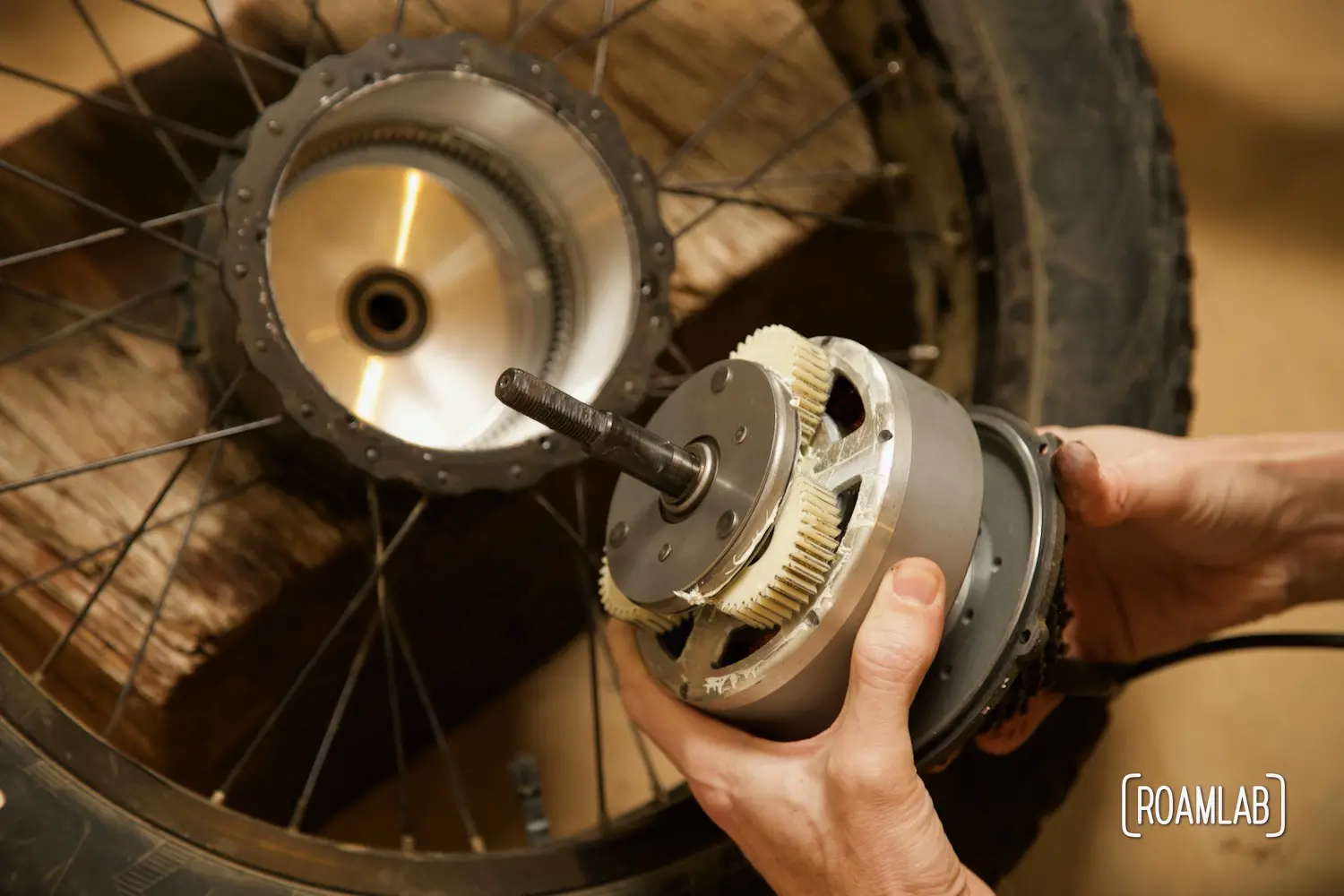
Boondocking Power Adding Up The Amps
Update: This is a legacy post. Three years later, I update expectations and estimates in How Much Power Do I Need In My RV? I am keeping this post up as a point of comparison but not for instruction.
An important part in optimizing one’s electrical system for boondocking is knowing what one’s consumptions will be. If one already has the experience of being on the road, all one needs to do is monitor one’s consumption. Sure, we have been nomads for 2 years. But that has been a matter of cooking over camp fires and working in coffee shops, libraries, or truck stops. To guess at our battery usage with all the conveniences of an RV, we run the numbers to get a vague idea of what is to come.
Energy consumption varies dramatically by lifestyle. One could consume a lot more or less depending on one’s equipment and usage. We are programmers, so that means we use computers more frequently than the average RVer. Here, I’m estimating for a heavy use day: a work day. Other days, we might spend a lot of time outside hiking and exploring, but if the weather is foul and we are just waiting it out, we would be waiting it out indoors.
| Appliance | Watts | Amps (for a 12V system) | Usage (hours) | Total (Amp Hours) |
|---|---|---|---|---|
| Dell Inspiron Laptop | 65 | 5.4 | 12 | 65 |
| MacBook Air Laptop | 45 | 3.7 | 12 | 45 |
| 28″ Television | 42 | 3.5 | 3 | 10.5 |
| Lighting1 | – | – | – | 5.65 |
| Water Pump2 | 72 | 6 | .5 | 3 |
| Fan-tastic Fans (2) | 12* | 6 | 2 | 12 |
| 141.15 |
Lighting Consumption
In a past life, LEDs were kinda my thing, so this bit is important to me and very much subject to change. All the same, there are a lot of lights to be considered, so I will break it down by usage. In the end, though, it turns out to be a pretty minor portion of my calculation.
| Appliance | Watts | Amps | Count (bulbs) | Usage (hours) | Total (Amp Hours) |
|---|---|---|---|---|---|
| Main Cabin Recessed Lighting | 2 | 0.17 | 6 | 3 | 3 |
| Bedside Reading Lights | 1 | 0.08 | 2 | 1 | 0.17 |
| Bathroom Vanity Light | 4.9 | 0.18 | 1 | 1 | 0.18 |
| Nighttime Walkway Strip Lights | 6.2 | .5 | 9 (18′) | 0.5 | 2.3 |
| Total | 5.65 |
Other Power Consumption Considerations
High power items that we are not considering include a microwave, coffee maker, toaster, and air conditioning. Other appliances that would take a lot of power—like a stove and refrigerator—will run off of liquid propane. That being said, the refrigerator will have to run off battery power while traveling for safety reasons.
| Refrigerator Type | Watts | Amps | Total (Amp Hours based on 10 hours on DC) | Efficiency (AHr/ft3) |
|---|---|---|---|---|
| Norcold 2.4 cu.ft. No Freezer | 140.4 | 11.7 | 117 | 48.75 |
| Norcold 4.5 cu.ft. Internal Freezer Drawer | 170.4 | 14.2 | 142 | 31.55 |
| Norcold 5.3 cu.ft. Top Freezer | 211.2 | 17.6 | 176 | 33.2 |
We have not yet settled on a refrigerator model, so I have compared three common varieties of RV refrigerator. I have been most interested in models similar to the Norcold 5.3 cu.ft. model with separate doors for the freezer and refrigerator. While larger models logically take more power to run, they also have significantly better efficiency per cubic foot.
We anticipate that the truck alternator will help offset this load. We are looking into improving the charging capacity of the alternator similar to the modification described in Heavy-Duty Alternator Charge System Modification.
Power Consumption Conclusion
Fortunately, my estimation matches up with charts that I have spotted on a lot of other RVing sites. We use less of one thing and more of another, but the general conclusions are pretty much the same. Overall, I anticipate needing about 140 amp hours a day. This estimate is on the high end but I’d rather overestimate. There are plenty of other appliances that may come into play later on.
A Rule of Thumb offered by The 12 volt Side of Life is, “The average RVer, one without unusual needs, generally finds that one 4 amp (solar) panel and one 105AH battery (or equivalent) per person provides an adequate system for long term outings. An extra panel and battery provides insurance during bad weather and enough power to handle the unexpected.”
With all this information in my pocket, I will likely start my setup with two 12 volt 105AH AGM deep cycle batteries.
Truck Camper Power Consumption Resources
- The 12 volt Side of Life from Marx RV
*Fantastic Fans list as less than 3 Amps on high but I didn’t find an explicit amount so I rounded up.
2Based on table from The 12 volt Side of Life







Eric N.
Interesting data! I’ve long heard to avoid the 12 volt mode on 3-way refrigerators because it is so wildly inefficient, either traveling with the propane enabled and the fridge running that way, or turning it off before leaving and turning it on again before using (i.e. conserving the cold). You might be interested in this detailed rundown of a true 12v DC compressor refrigerator by Mello Mike: http://www.truckcamperadventure.com/2016/02/the-danfoss-compessor-refrigerator-pros-cons-and-a-few-tips/
Your numbers did not mention the draw from a heating system, do you plan to use a traditional RV furnace, a catalytic heater, a portable Mr. Buddy, or just stay in warm places? (The last one has many advantages!)
I was surprised to discover that my hot water heater drew a little more than an amp while heating water. It’s propane, so I don’t know where that draw is coming from, maybe controlling circuitry?
Thanks for all the detail, it’s exciting following your renovations.
Lexi Goforth
Wow! That is an excellent point! I hadn’t heard about people completely turning of the refrigerator while in transit. I suppose, so long as you have one that has a tight seal and solid insulation, the time between one spot and another would be completely acceptable. That would certainly resolve my concern about having enough power while driving.
As for the heater: I guess the plan is mostly to stay in warm places and insulate well. We don’t like the cold, but we have stayed in our share of Walmart parking lots with below freezing temperatures while living in Dodgy I, which just so happened to be uninsulated sheet metal with a draft that could put a wind tunnel to shame. After that, we agreed that we would always stay in a climate that were at least 20°F. Though, that is subject to change.